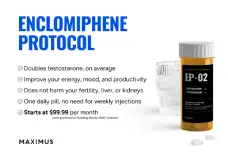madman
Super Moderator
Reevaluating the threshold for low total testosterone
In this podcast, Adith Arun from the Yale New Haven Hospital Center for Outcomes Research and Evaluation, and a third year medical student at the Yale School of Medicine, discusses a letter to the editor, “Reevaluating the threshold for low total testosterone,” published in the May 2025 issue of...
Bob Barrett:
Well, finally, looking ahead, what kind of research do you think is needed to ensure that guidelines and clinical practices align with the latest evidence on testosterone measurement?
Adith Arun:
Yeah, that’s a great question, Bob. And I think there are a few different cutoffs out there by different bodies, which you highlighted earlier in our conversation. And I think the first step is to try to harmonize these cutoffs. Because I think asking physicians to navigate this on their own is not quite the right approach here. And I think getting a consensus definition is probably the best way to go ahead.
But as you pointed out, what do we need to do in order to reach a consensus definition? And I think we can use the understanding of the methods that we have today to inform what we do next. So, I think the fact that mass spec is what most labs use today, and it is considered the gold standard approach to measurement of this specific analyte. But certainly, there are some labs in different places across the world that use the immunoassay methods, like the newer generation immunoassay methods.
So, I think we need to harmonize these levels in the sense that we probably just need a single consensus cutoff point, given that we know, based on previous data that the current generation of mass spec methods and the current generation of immunoassay methods are very concordant to each other, as they have each individually gone through their own changes over the past 20 plus years. We now see that these two methods are quite similar to each other. And so, we just need to calibrate accordingly.
But I think to prove that these are aligned, we need to do that first in a patient-specific way where we collect data on patients who are probably healthy patients who volunteer this and measure it, both the immunoassay and the mass spec method, to establish the fact that these are actually very concordant. Then we just need to build a consensus definition of like, “Okay, is it 264, is it 300, or is it something else?” And I think that requires future work that is in the realm of lab medicine and clinical chemistry.
And so, I think that’s an exciting new frontier to go to which is that, hey, we probably do need to pick a new cutoff or harmonize the cutoff and maybe pick. Maybe it’s 264, maybe it’s 300. And I think that is the next step to go.














